Space News
Medium
255

Image Credit: Medium
Find Your Perfect Smartphone at FlexeMarket — iPhone and Samsung Devices at Great Prices
- FlexeMarket offers a variety of iPhones and Samsung phones at affordable prices with genuine products.
- They provide support from knowledgeable staff to help customers choose the right phone based on their needs and budget.
- FlexeMarket's iPhone selection includes stylish and powerful models, catering to different preferences, while Samsung phones offer innovation and quality.
- For in-person shopping, visit FlexeMarket at 7826 Beechcraft Ave, Gaithersburg, MD 20879, or explore their offerings online at www.flexemarket.com.
Read Full Article
15 Likes
Nasa
316
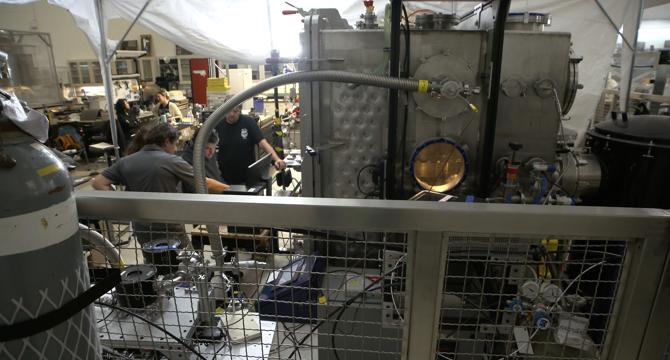
Image Credit: Nasa
NASA Kennedy Breathes Life into Moon Soil Testing
- Researchers at NASA's Kennedy Space Center have successfully extracted oxygen from simulated lunar soil on a commercial scale, marking a significant breakthrough in utilizing resources on the Moon.
- The achievement is a step towards NASA's goal of using lunar resources instead of relying solely on supplies from Earth, with researchers conducting molten regolith electrolysis testing at Swamp Works in collaboration with Lunar Resources Inc.
- The process involved heating simulated lunar soil in a reactor to extract molecular oxygen at a temperature of 1700°C, replicating lunar surface conditions to produce oxygen for potential utilization in lunar landers, infrastructure building, and as a propellant.
- Post-test data analysis will inform the development of full-scale molten regolith electrolysis reactors for lunar missions, demonstrating NASA's commitment to advancing technology for human deep space exploration.
Read Full Article
19 Likes
Medium
44

Image Credit: Medium
A Cosmic Breakthrough: James Webb Telescope Peers into the Heart of a Strange Exoplanet
- TOI-421 b, a hot sub-Neptune located 244 light-years away, surprises scientists with a clear atmosphere rich in water vapor, sulfur dioxide, and hydrogen.
- James Webb Telescope's discovery challenges existing models of sub-Neptune formation as TOI-421 b's hydrogen-dominated atmosphere resembles gas giants like Jupiter.
- TOI-421 b's unique chemistry offers valuable insights for scientists and suggests hotter sub-Neptunes could be important targets for future observations.
- This discovery highlights the vast diversity of exoplanets and raises important questions about planetary formation and the potential for alien life, showcasing the power of Webb's capabilities.
Read Full Article
2 Likes
Nasa
361
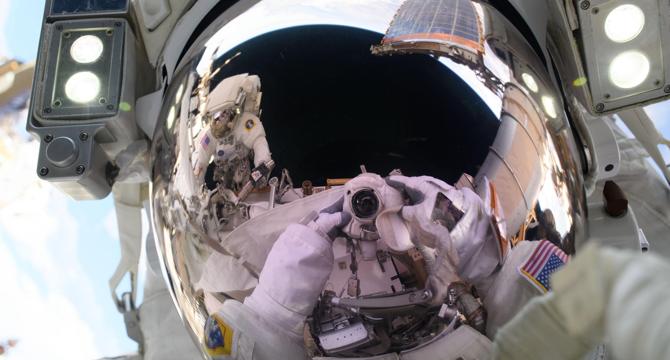
Image Credit: Nasa
Crew Kicks off Week with Agriculture and Tech Work, Wraps Spacewalk Cleanup
- The Expedition 73 crew members aboard the International Space Station kicked off a busy week with tasks related to technology development, space botany, and spacewalk cleanup.
- NASA astronaut Nichole Ayers and station commander Takuya Onishi checked out plant growth experiments, conducted space botany work, and performed troubleshooting tasks for communications systems.
- To wrap up cleanup after a recent spacewalk, Onishi worked on spacesuit maintenance, while astronaut Jonny Kim removed batteries from spacesuits and the jetpack system.
- Astronaut Anne McClain monitored a tech demonstration for producing pharmaceutical ingredients in space, conducted a space agricultural study, and performed routine tasks on the International Space Station.
Read Full Article
21 Likes
Discover more
Nasa
209

Image Credit: Nasa
NASA’s Webb Lifts Veil on Common but Mysterious Type of Exoplanet
- NASA's James Webb Space Telescope is helping scientists understand sub-Neptunes, the most common type of exoplanet in our galaxy, by observing exoplanet TOI-421 b.
- Sub-Neptunes, smaller gassy planets shrouded in mystery and haze, were unexpected discoveries prior to the Kepler telescope's findings.
- Webb's observations revealed the composition of TOI-421 b's atmosphere, including water vapor, carbon monoxide, sulfur dioxide, and a hydrogen-dominated atmosphere.
- Contrary to expectations, TOI-421 b's clear atmosphere suggests a different formation and evolution process from other observed sub-Neptunes.
- The hot sub-Neptune TOI-421 b orbits a Sun-like star and has a unique hydrogen-rich atmosphere, challenging previous assumptions.
- The team aims to observe more hot sub-Neptunes to determine if TOI-421 b is an outlier or representative of a broader trend.
- The researchers believe that this new way of studying sub-Neptunes may accelerate the understanding of these common exoplanets.
- The findings were published in the Astrophysical Journal Letters on May 5, providing new insights into the formation and evolution of sub-Neptunes.
- NASA's James Webb Space Telescope continues to unravel mysteries in our solar system and beyond, contributing to our understanding of distant worlds and the universe's origins.
- The telescope is an international program led by NASA in collaboration with ESA and CSA, advancing space science exploration.
Read Full Article
12 Likes
Brighter Side of News
151
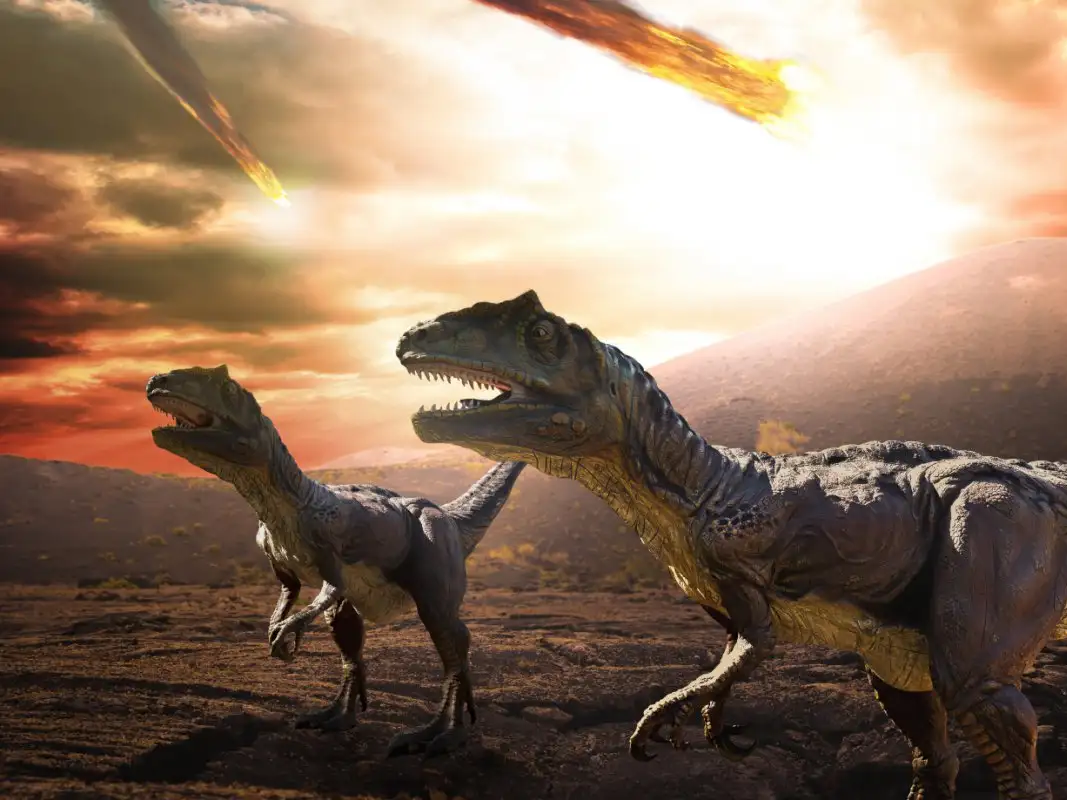
Image Credit: Brighter Side of News
New study reveals the devastating force that drove dinosaurs to extinction
- Scientists from Dartmouth University conducted a study to determine the cause of dinosaur extinction using advanced computing methods.
- The study, featured in Science, used a carbon-cycle model to analyze geological and climate data around the K-Pg event 66 million years ago.
- Machine learning was utilized to explore over 300,000 scenarios involving carbon dioxide levels, sulfur emissions, and biological activity.
- Deccan Traps volcanic eruptions are suggested as a significant factor leading to the mass extinctions, with or without the asteroid impact.
- The study indicates that volcanic gases from Deccan Traps could have triggered a global collapse without the need for an asteroid impact.
- The model discerned no significant increase in gas emissions during the Chicxulub impact, challenging previous theories.
- The study's findings suggest the abrupt decline in organic carbon in oceans, indicating substantial species loss during the extinction event.
- The innovative computational method used in the study provides a new angle on the dinosaur extinction debate and offers insights into Earth's history.
- Earth has experienced five mass extinctions, each reshaping life on the planet and allowing for the evolution of new species.
- This study's methodology, focusing on parallel inversion in earth sciences models, could revolutionize the way we understand past geological events.
Read Full Article
9 Likes
Earthsky
317
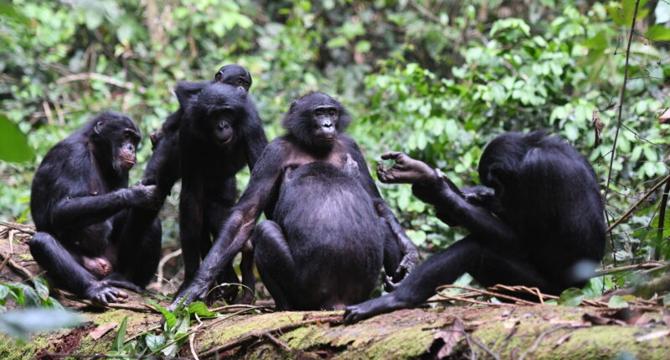
Image Credit: Earthsky
Female bonobos rule the bonobo kingdom. Girl power!
- Female bonobos in a male-dominated kingdom hold power and influence through alliances, as observed by scientists from Harvard University and the Max Planck Institute of Animal Behavior.
- A study published in Nature revealed that female bonobos control mating decisions, reject unwanted advances, and control valuable resources, leading to a matriarchal social structure.
- Female bonobos form alliances to win conflicts, outranking males, and elevating their social status through cooperation, as evidenced by 30 years of data from bonobo communities in the Congo.
- Coalitions among unrelated female bonobos have been observed to invert the male-biased power structure, showcasing the strength in numbers and solidarity among females.
- While females do not dominate males, they achieve higher social status by collectively attacking males, shaping new group hierarchies and wielding power through cooperation.
- Hidden ovulation in female bonobos allows for reproductive autonomy, impacting social dynamics and behavior control, emphasizing the significance of female empowerment in bonobo societies.
- Female bonobos offer insights into alliance formation, hidden ovulation strategy, and power dynamics among sexes, indicating the need for further research to comprehend these phenomena.
- Barbara Fruth of the Max Planck Institute of Animal Behavior expressed intrigue at bonobos being the only animals to form female alliances, suggesting a unique power dynamic shared with human evolutionary relatives.
- Overall, female bonobos wield power through alliances, suppressing male aggression while maintaining a high social status in their communities, showcasing a distinctive social structure within the animal kingdom.
Read Full Article
19 Likes
Knowridge
200

Image Credit: Knowridge
Scientists found a potential sign of life on a distant planet: why many are still skeptical
- Astronomers discovered an unexpected atmospheric gas, dimethyl sulfide, on a distant planet called K2-18b, potentially indicating signs of life.
- K2-18b is an enigmatic world located about 120 light-years from Earth, significantly different from Earth in terms of mass and composition.
- It is speculated that K2-18b could be a mini-Neptune, a gas dwarf, or a hycean world with deep oceans under a hydrogen atmosphere.
- In 2023, the James Webb Space Telescope detected carbon monoxide, methane, and suggested dimethyl sulfide in K2-18b's atmosphere.
- Although the DMS signal on K2-18b intrigued scientists, uncertainties remain about its presence and the planet's habitability.
- Follow-up observations in 2025 supported the presence of DMS on K2-18b, raising questions about the possibility of life on the planet.
- The detection of DMS does not confirm the existence of life on K2-18b, as further exploration and analysis are required to validate this hypothesis.
- Astronomers are eagerly studying K2-18b and similar worlds to deepen their understanding and search for potential signs of alien life.
- The findings highlight the importance of ongoing research using the JWST to uncover clues of extraterrestrial life, making future discoveries in astrobiology exciting.
- While the detection of DMS may offer a tantalizing glimpse into the possibility of alien ecosystems, uncertainties and further verifications persist.
- Continued exploration of K2-18b and other exoplanets using advanced telescopes like JWST will shape the future of astrobiology and our quest to understand life beyond Earth.
Read Full Article
12 Likes
Livescience
370
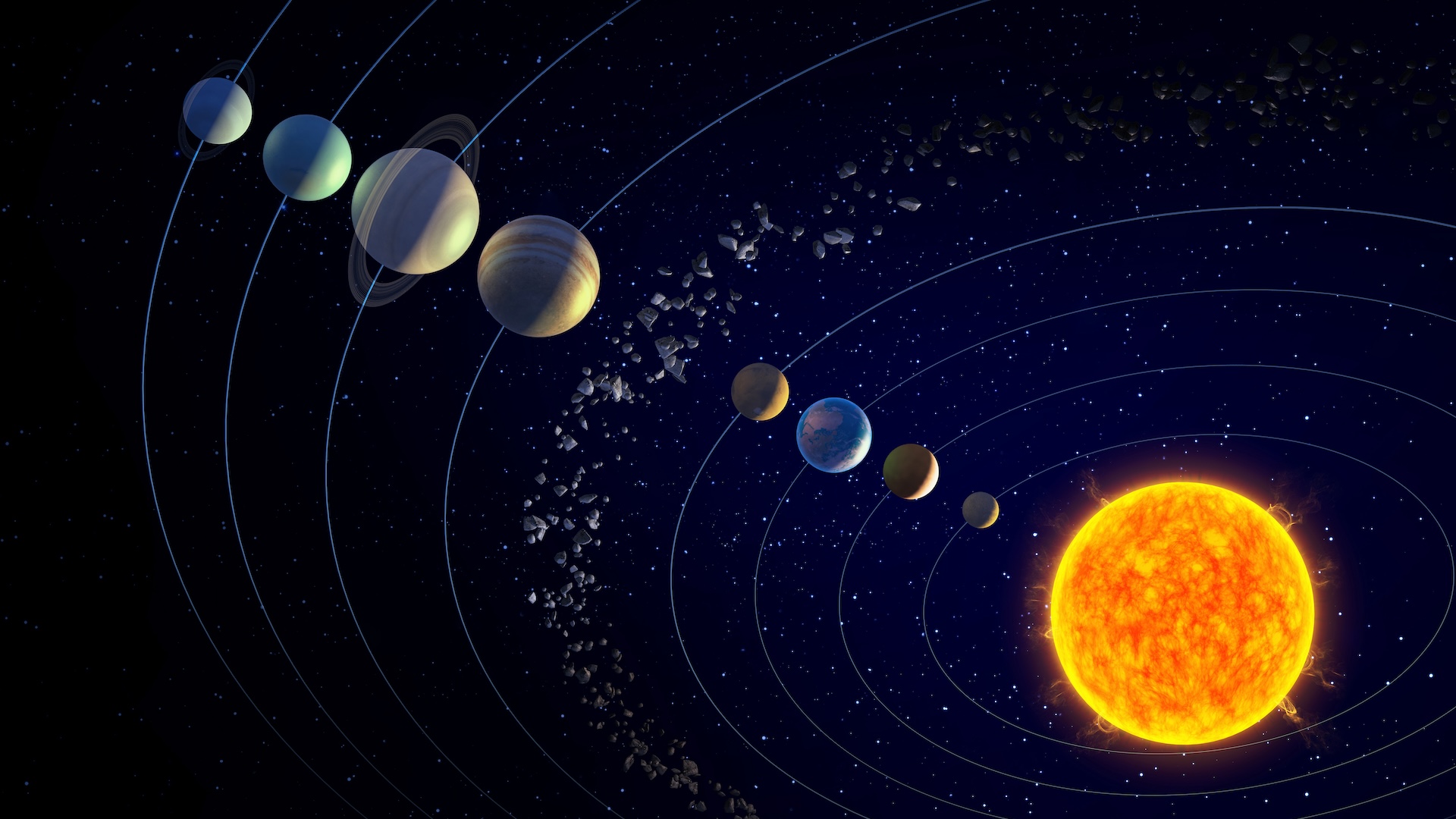
Image Credit: Livescience
Do other planets have seasons?
- Other planets, dwarf planets, and moons in our solar system have seasonal cycles that differ from Earth's due to factors like axial tilt and orbit shape.
- For example, Mars has an axial tilt of around 25 degrees, resulting in seasonal variations similar to Earth, with winters dominated by carbon dioxide ice.
- Planets like Mercury, with no tilt, experience minimal seasonal changes, while Uranus, with a 90-degree tilt, has intense and extreme seasons.
- The tilt and shape of a planet's orbit can impact seasonal changes, with variations seen over billions of years, influencing planetary conditions and potential for life.
Read Full Article
22 Likes
Xbox
169

Survival Tips For Revenge of the Savage Planet, Available Today
- Revenge of the Savage Planet, a sequel to Journey to the Savage Planet, is available, offering expanded worlds and new gadgets for exploration.
- Players are provided survival advice for navigating the savage planets, featuring new gear like a whip, goo sprays, and plasma tethers.
- Scanning the environment is crucial for unlocking quests, discovering rewards, and understanding the world in detail.
- The game features over 70 creatures reacting differently to player tools, encouraging strategic interactions for progression.
- Exploration includes swimming, finding hidden secrets, and interacting with diverse creatures across vibrant planets.
- Xbox Game Pass members can enjoy Revenge of the Savage Planet early with upgrades available for enhanced gaming experiences.
- The game offers dynamic co-op gameplay online, crossplay, and split-screen options for a versatile gaming experience.
- Players can expect a satirical, action-packed sci-fi adventure exploring alien worlds, offering unique abilities and tools.
- Various planets with distinct environments are available for exploration, with a focus on cataloging, experiments, and new gear.
- Revenge of the Savage Planet promises an immersive experience filled with challenges, upgrades, and secrets across multiple planets.
Read Full Article
10 Likes
Hackaday
165

Image Credit: Hackaday
Lancing College Shares Critical Design Review for UK CanSat Entry
- A group of students from Lancing College in the UK have submitted their Critical Design Review (CDR) for the UK CanSat project.
- The students' satellite aims to collect temperature, pressure, and GPS data, following their Preliminary Design Review (PDR).
- The team of six students utilizes an Arduino Nano Every, BMP388 sensor, BE880 GPS module, and RFM69HCW module for radio transmission.
- The students showcase their progress in a Gantt chart, inventory skills, conduct tests, and use innovative tools like Blender and ChatGPT in their project.
Read Full Article
9 Likes
Digitaltrends
156

Image Credit: Digitaltrends
Enjoy a meteor shower Monday night … and other skywatching tips from NASA
- May skywatching tips from NASA include Eta Aquarid meteor shower, visible in Southern Hemisphere, peaks on May 6 with 10-20 meteors per hour.
- Planets visible in May include Mars and Jupiter after sunset, Venus and Saturn in the early morning sky, with the moon passing Saturn and Venus on May 23.
- NASA provides tips on viewing a nova, expecting a bright explosion on a white dwarf star in a binary system called T Coronae Borealis, visible for several days in the coming months.
- Clear skies are essential for skywatching activities, including meteor showers and planet sightings. Consult NASA's video for more insights on these celestial events.
Read Full Article
9 Likes
Medium
415

Image Credit: Medium
How is AI used today?
- AI algorithms analyze user behavior for tailored recommendations in shopping, streaming, and social media.
- AI processes extensive data for trend identification, aiding businesses in decision-making through predictive analytics.
- AI revolutionizes art and music creation by generating unique pieces and assisting artists in their creative processes.
- AI is utilized in healthcare for disease diagnosis, image recognition, and virtual health assistants to improve patient care outcomes.
Read Full Article
24 Likes
Earthsky
125

Image Credit: Earthsky
Hurricane Preparedness Week: Tips to stay safe this season
- Hurricane Preparedness Week is from May 4 to 10, 2025, focusing on preparing for the upcoming hurricane season.
- To stay safe during hurricanes, it is crucial to understand the risks associated with tropical storms, including storm surge, flooding, and damaging winds.
- Preparation includes having a hurricane kit with supplies like food, water, medication, and having an evacuation plan in place if needed.
- Receiving forecast information from reliable sources like the National Hurricane Center and local National Weather Service offices is essential.
- Protecting your home by boarding up windows, securing outdoor items, and following safety measures during evacuation is vital.
- During and after a hurricane, staying indoors, avoiding flooded roads, and being cautious of downed power lines are crucial for safety.
- Post-hurricane precautions include using generators safely, staying away from damaged areas, and following authorities' instructions on when to return home.
- By being well-prepared and informed, individuals can effectively navigate the challenges posed by hurricane season and ensure their safety.
- Hurricane Preparedness Week aims to educate and equip people with the knowledge and resources to protect themselves and their communities during hurricanes.
- For more detailed information and safety tips, individuals can refer to additional resources available for comprehensive hurricane preparedness.
Read Full Article
7 Likes
Digitaltrends
49

Image Credit: Digitaltrends
Watch SpaceX’s stunning footage from Fram2 polar mission
- SpaceX recently shared stunning footage from its Fram2 polar-orbit human spaceflight mission, the first of its kind.
- Fram2 mission, launched on March 31, was the first crewed mission to fly in a true polar orbit, passing over both North and South poles.
- The crew, including non-professional astronauts, conducted over 20 scientific experiments focusing on bone and muscle density in microgravity, muscle maintenance, and observations of auroras.
- Despite initial discomfort and motion sickness, the mission was successful, marking a significant advancement in commercial and private human space exploration.
Read Full Article
2 Likes
For uninterrupted reading, download the app